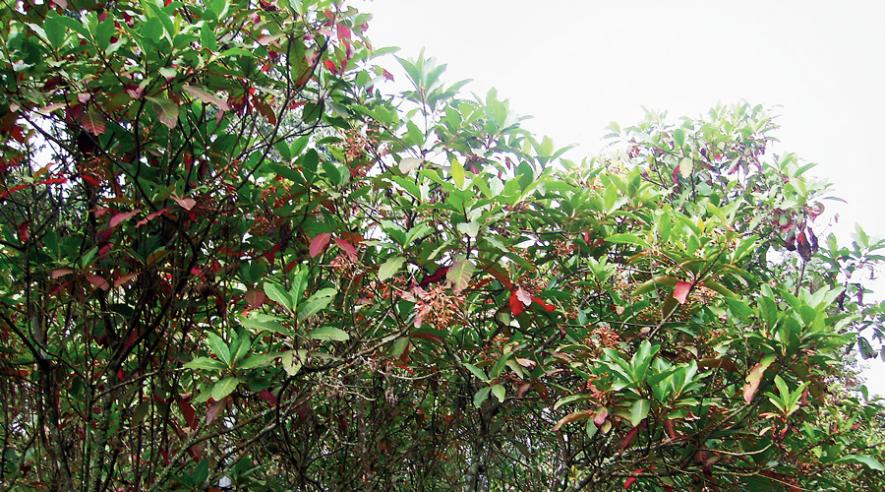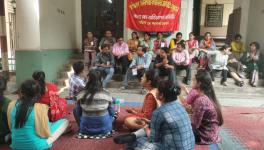Labourers Worst Hit as India’s Only Cinchona Plantation in North Bengal Plunges into Crisis

Image Courtesy: Telegraph India
Moonsung (North Bengal): India’s only cinchona plantation in Kalimpong district is facing a crisis due to market loss as the synthetic variant of this medicinal plant is now readily available in the market.
Cinchona plant, mostly trees, are used for various medicinal preparations, including anti-malarial quinine that is derived from its bark. Originally a South American plant, cinchona was brought to India by the British colonisers.
A visit to Moonsung cinchona plantation office made it clear that the government-run cinchona plantation, spread over 9,200 acres and employing about 5,500 people and bread provider to over 20,000 people in the hills of North Bengal, is now in dire straits.
The government cinchona factory at Mongpoo is closed for over a decade now, as it had not been able to match up the good manufacturing practice standards needed for the pharmaceutical industry. Established in 1874, much before India’s Independence, the factory has been shut since 2001.
The Cinchona Directorate, one of the largest public sector units in the Hills of Bengal, is now controlled by the Gorkhaland Territorial Administration.
The worst sufferers of the crisis in the cinchona plantations are the workers, who are struggling to survive.
Explaining how the labour system works in these plantations, Indrakumar Karkidholy of Bermiok village said children of existing workers are usually recruited. A labourer is paid Rs 268 per day and a bonus of Rs 4,500 is paid during Durga Puja (September-October) in the state. The luckier ones get a chance to be promoted as group D staff and get regular government wages.
“We are facing a lot of problems regarding new recruitments to cinchona plantations,” said Khagen Karkidholy, a leader of the Gorkha Janmukti Morcha’s (GJM) Anit Thapa faction.
Meanwhile, with the plantation under distress, a second line of employment has come up the area. About 1,000 jobless youths are now associated with homestays and over 150 homestays have sprung in these plantation tracts.
But these homestays do not get loans from government banks and are unbale to avail benefits of any scheme under the West Bengal tourism department, as the people here do not have any land papers, as the area falls under the Cinchona directorate.
In fact, the GJM’s Thapa faction has threatened an agitation on this issue, alleging that over 10,000 residents are suffering due the apathy of the Cinchona Directorate and GTA authorities.
In view of the present condition of the cinchona market, where barks are lying unsold in the central godown at Mongpoo, the directorate has started plans to diversify to 10 other medicinal plants, which have been planted in the directorate area, said Nayan Thapa, administrative in-charge of the Monsoong cinchona plantations.
Thapa said the present labour strength consists of fourth generation workers in these plantations, adding that the key challenges before the cinchona plantations are political instability of the GTA, forest fires and human-wildlife conflict.
On the poor condition of labourers, Thapa said every year model labour quarters are sanctioned by the directorate whose budget is controlled by the department of food processing and horticulture, government of West Bengal. The funds are disbursed through GTA, but timely allocation of the budget has been a problem here, said some sources.
A peeved local resident, Chandra Karki, said the sons and daughters of cinchona plantation workers are not being provided jobs and simultaneously the opportunity for the younger generation to earn a respectful living in the tourism business is also being denied.
“The political bigwigs of the area are not taking any steps for giving ‘no objection’ certificates to homestay owners,” he said, adding that without NOCs “we are at a loss to get financial support from banks.”
Even newer homestay owners are facing difficulty in in getting funds for their projects within the Cinchona Directorate area, he said.
The region, which boasts of unique scenic beauty, and where tourism is the second most important industry after the cinchona plantations, is crying for help. But, their cries have so far failed to reach the ears of powers that be.
Get the latest reports & analysis with people's perspective on Protests, movements & deep analytical videos, discussions of the current affairs in your Telegram app. Subscribe to NewsClick's Telegram channel & get Real-Time updates on stories, as they get published on our website.
























